All posts by Reinstein Woods
Nature Sightings
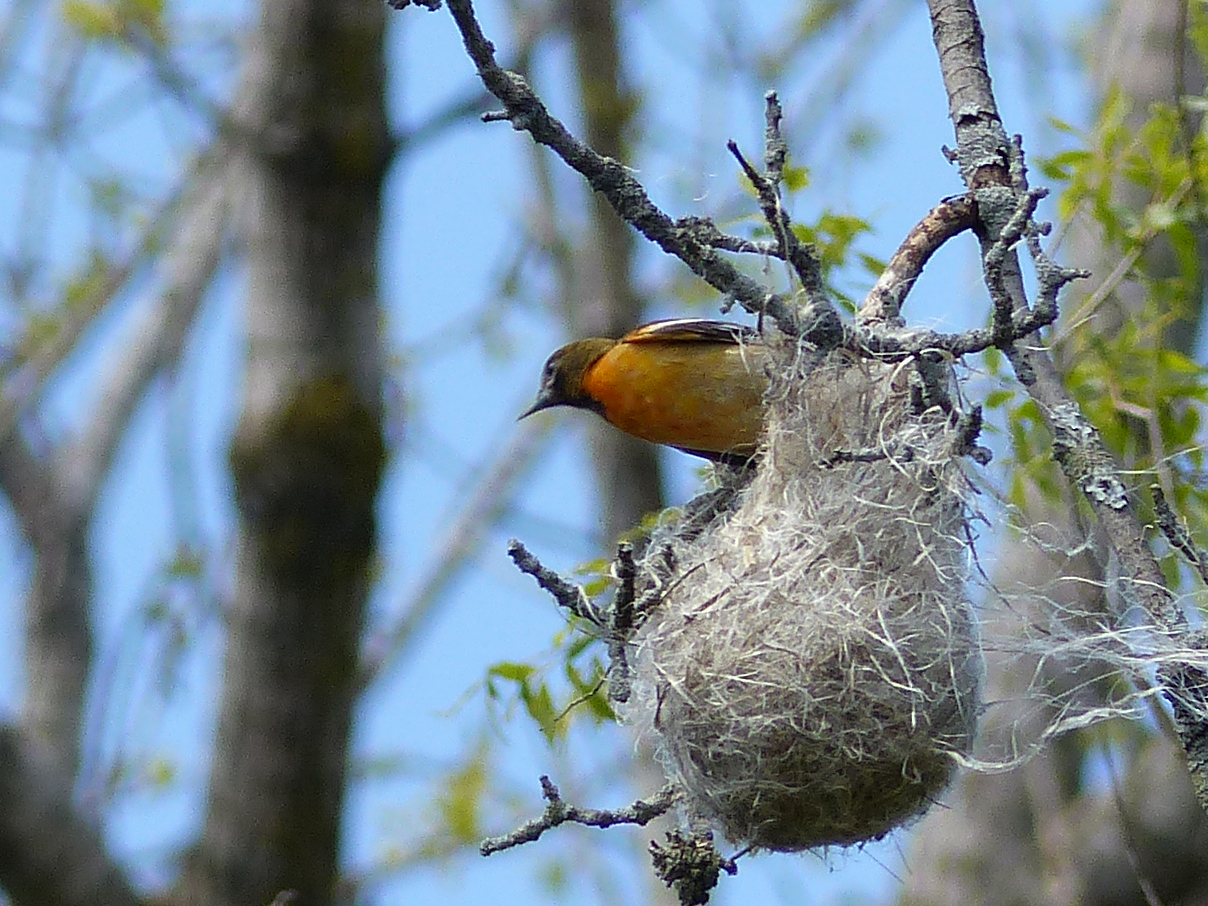 If you have walked the trails at Reinstein Woods any morning in the last few weeks, you may have noticed either snapping turtles or painted turtles laying their eggs in loose soil along the trails. Black cherry trees just lost all of their flower petals. Baltimore orioles have finished weaving their hanging nests. There are 3 oriole nests in close proximity to the education center. Dragonflies and damselflies are abundant right now. Look for dot-tailed whiteface dragonflies perched on water lilies, 12-spotted skimmers in flight over ponds, or
If you have walked the trails at Reinstein Woods any morning in the last few weeks, you may have noticed either snapping turtles or painted turtles laying their eggs in loose soil along the trails. Black cherry trees just lost all of their flower petals. Baltimore orioles have finished weaving their hanging nests. There are 3 oriole nests in close proximity to the education center. Dragonflies and damselflies are abundant right now. Look for dot-tailed whiteface dragonflies perched on water lilies, 12-spotted skimmers in flight over ponds, or 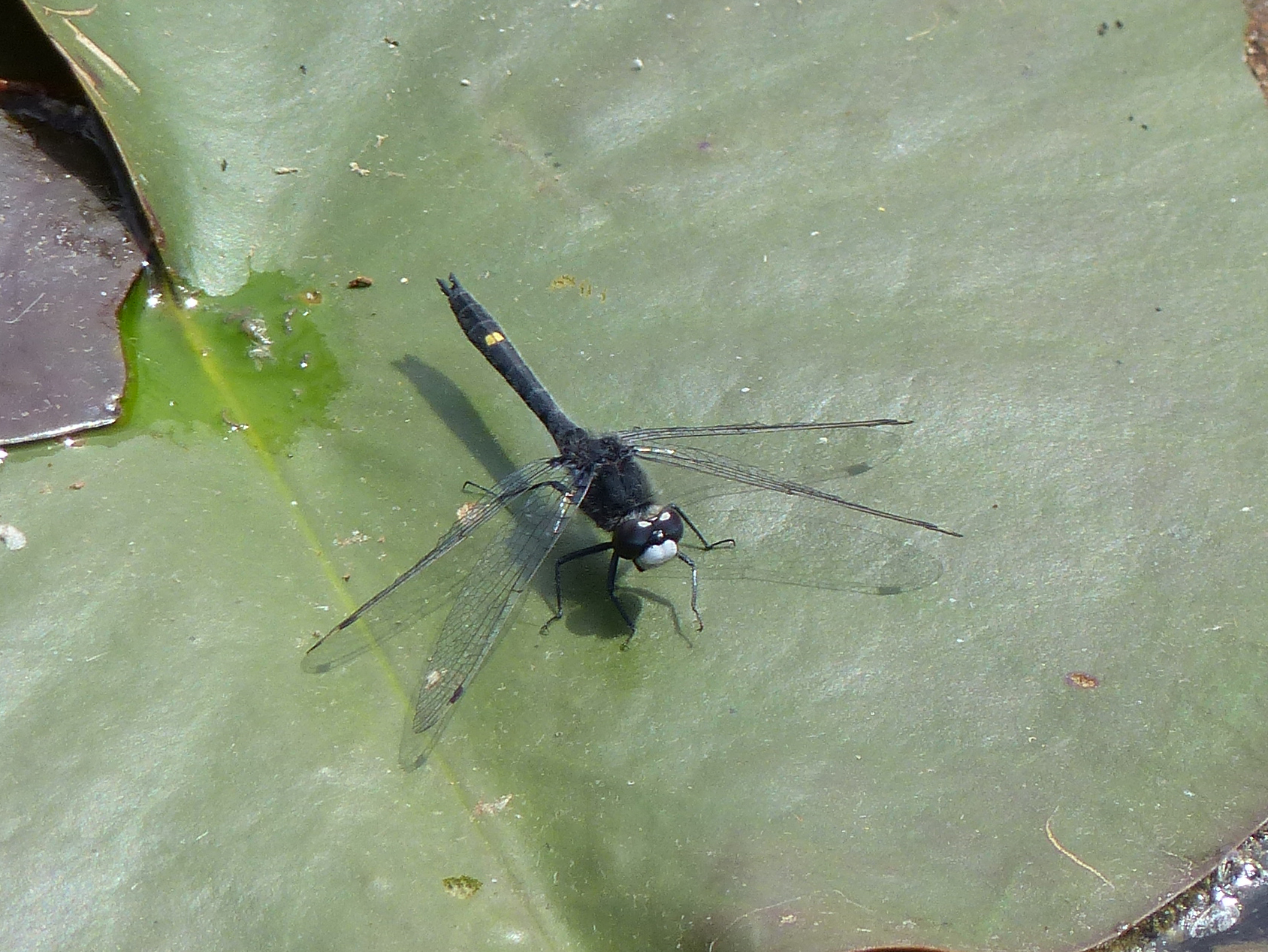 the delicate flight of ebony jewelwings on beech tree trail. Little wood satyr butterflies flutter among low-lying vege
the delicate flight of ebony jewelwings on beech tree trail. Little wood satyr butterflies flutter among low-lying vege tation along the trails. Eastern tiger swallowtails are frequently observed sipping nectar from dame’s rocket flowers. The fragrant pink water lilies are in full bloom right now. Their vibrant colors will remain for the summer months. The “Jug-o-rum” call of bull frogs and the “banjo pluck” call of green frogs can be heard in the wet areas of the preserve. Soon the small American toadlets will be emerging from the ponds after completing metamorphosis.
tation along the trails. Eastern tiger swallowtails are frequently observed sipping nectar from dame’s rocket flowers. The fragrant pink water lilies are in full bloom right now. Their vibrant colors will remain for the summer months. The “Jug-o-rum” call of bull frogs and the “banjo pluck” call of green frogs can be heard in the wet areas of the preserve. Soon the small American toadlets will be emerging from the ponds after completing metamorphosis.
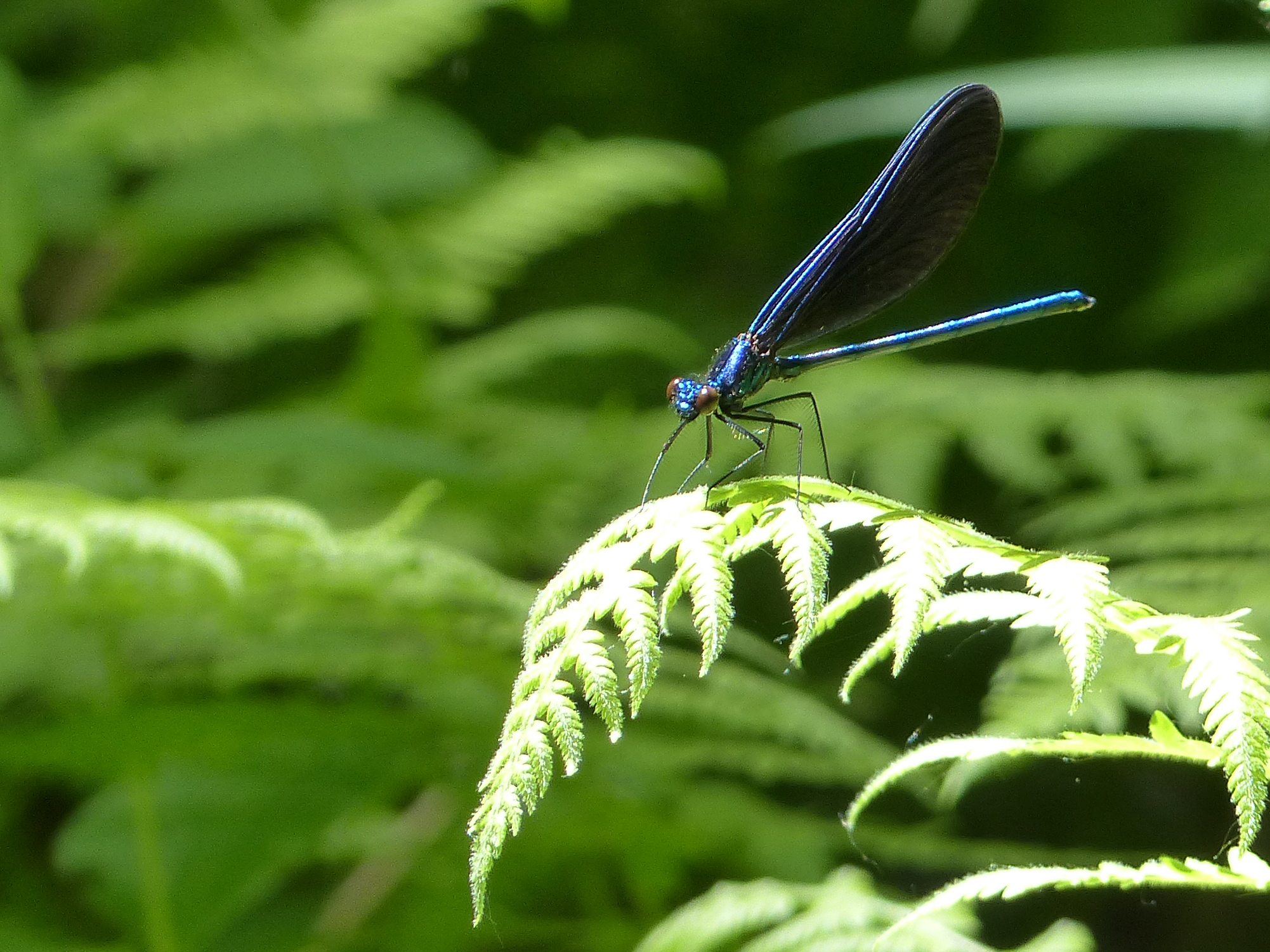
Reinstein Woods Offers Summer Teacher Institute
The New York State Department of Environmental Conservation (DEC), in partnership with Friends of Reinstein Woods, is accepting registrations for a Summer Teacher Institute to be held August 3-4 at Reinstein Woods Environmental Education Center in Depew. The Institute is designed for educators of students in Pre-K to grade 12, and will run from 9 a.m. to 3:30 p.m. each day.
Teachers will learn effective techniques to enhance their teaching in math, English language arts, science and other subject areas. Hands-on activities that align with Common Core and New York State learning standards will cover topics such as invasive species, tree and plant identification, geocaching, citizen science projects and bird-classroom connections. The training includes the Flying WILD curriculum that explores ideas for bird-related schoolyard enhancements, festivals and more.
Extensive information on environmental education resources available to Western New York teachers will be included in the program. Participants will receive written materials to enable them to transfer their new knowledge directly to the classroom.
The two-day program provides 12 hours of instruction for which in-service or continuing education credit may be available. Participants will receive written materials to enable them to transfer their new knowledge directly to their school. A materials fee of $40 includes lunch on the second day.
Registration information is available online or by calling Reinstein Woods at (716) 683-5959. Space is limited, so early registration is recommended. Teachers must register by July 20, 2016.
Thank you donors!
Friends of Reinstein wishes to extend a heartfelt thank you to donors who have contributed this spring. Your donations will enable Reinstein Woods to continue sharing nature’s harmony with children and adults.
2016 Earth Day Appeal
Marilyn Gross
Donna Michael
Cottonwood Level:
Valerie Antos
Gasper Aronica
Irene Benbenek
Lee & Mary Boice
Kathy Halter
Dennis and Becky Kaniecki
Tom & Sue Lawson
Gary & Maria Michalski
Barbara Niehus
White Ash Level:
Peter & Teresa Corrigan
Gary Degener
Mike & Carol Gettings
Williams Heather
Edward & Kate Martin
Thomas Stoll
Katherine Wryk
Yellow Birch Level:
Kevin & Joan Kumor
Tom & Andrea Mudd Sr.
Black Walnut Level:
Linda Arndt
Dave & Alice LaGraves
Scot & Karen Smith
Sugar Maple Level:
Scott and Meaghan Green
Mary Losi
Memorial Donations
In Memory of Joseph and Grace Losi
Dennis and Evelyn Adams
Robert and Joan Barry
John and Diane Betz
Gary and Sheila Billingsley
Robert and Karen Billingsley
Paul and Beverly Brown
Frank Ferro
James and Linda Halt
Mary, Lora and Jan Losi
Mary Losi
Michael Panzica
Jack and Kathleen Patterson
Beverly Roe
Charles and Barbara Putzbach
Robert and Michele Scott
Roger and Judith Walter
In Memory of Jane Albrecht
International Society of Automation
Dorothy Rizzo
Ken Schmidt
Thomas Schuler
Thursday Couples Club of Cheektowaga
In Memory of Tom Schuler
Ed Albrecht
Ann Duquin
Robin Ersing
Therese Klinck-Stahl
Kristen Kelsey
Franklin and Kathleen Kubiak
Ronald Schreiber
Thursday Couples Club of Cheektowaga
Spring It On! Donors
Gasper Aronica
Sue Banchich
Jennifer Bennett
Meaghan Boice-Green
Angela Brock
Cheryl Buechi
Victor Carson
Henry Ciesla
Phyllis Dennis
Brittany DiLeo
Angela DiLoro
Stefanie Ecker
Mike & Carol Gettings
Mary Losi
Ann Murphy
Jeremy Oczek
Gale Persil
Thomas Persil
Susan Phillips
Kayla Rizzo
Helen Roche
John Rosenburg
Kristen Rosenburg
Brittany Rowan
Thomas Rowan
Alfred Runkel
Joan Scott
Arthur Soyk
Vinod Suchak
Anne Tryjankowski
David Valley
Carol Vaughan
Tom Wiggins
Ginger Wszalek
New Members at the Donor Level and Higher:
Donor:
Thomas Pietrus
Steve Kondrak
Michele Sanner
Gary Steils
Thomas Stoll
Contributors:
Robert Dukarm & Family
Edwin P. Hart
Dave & Joyce Hodgson
Andrew Moon
Jeremy & Sally Oczek
Benjamin Sackmary
Lori Stilwell
Vinod Suchak
Patron:
David Kennedy
BioBlitz Planned at Reinstein Woods
Public Invited To Participate in 24- Hour Event Documenting Biodiversity
The New York State Department of Environmental Conservation (DEC), in partnership with Friends of Reinstein Woods, invites the public to participate in a “BioBlitz” at Reinstein Woods Nature Preserve in the town of Cheektowaga. The 24-hour BioBlitz will attempt to find and identify as many different species of organisms as possible.
“This is a great way to experience nature first-hand,” said DEC Education Center Director, Meaghan Boice-Green. “Exploring a small corner of nature can lead to unexpected discoveries and inspiring encounters with living things. The information collected will aid in our efforts to preserve the unique array of life at Reinstein Woods.”
Starting on the evening of Friday, May 13, Field Teams of local scientists and volunteers will work together to seek out species living at Reinstein Woods. Volunteers will accompany trained leaders in documenting a specific group of organisms, such as birds, insects, or flowering plants. Overnight, scientists will trap and record data about organisms that are active at night. On Saturday May 14, efforts to find and identify organisms like trees, fungi, and mammals will continue throughout the day. All of the data will be shared on www.iNaturalist.org, enabling participants to see the results of their efforts.
From 10 a.m. to 5:30 p.m. on Saturday, families can participate in “mini-blitz” stations, a bird walk, and a photo scavenger hunt, learning how to identify common plants and animals along the way. Participants of all ages and abilities are invited to attend.
Registration is required to join a Field Team, but no registration is required for Saturday’s “mini-blitz” activities. Register online or call Reinstein Woods at (716) 683-5959.
National EE Week Part 5: Climate Changes

I admit it: I hate heat. I hate hot weather the way many people hate snow. I’d rather throw on an extra layer than sweat through a 90 degree day.
Like it or not, our planet is getting warmer, and that is changing the climate- the general pattern of weather upon which our food and water sources depend. The thought of it can be overwhelming, enough to make you sweat even in winter.
While we can’t change what’s already happened, we can change our behavior to affect the climate of the future. The most important thing we can do is make our voices heard to those in a position to create policies that will have a positive long term effect. Beyond that, try a few small actions in honor of Earth Day 2016:
Turn it off. Look around right now. How many lights are on that aren’t really being used? What about a TV? Lighting can be more than 10 percent of your electric bill, while the fossil-fueled power plants that provide the electricity are adding to the planet’s warming. Get in the habit of turning lights and other electronics off. Everywhere you go- does that TV really need to be on in the empty waiting room?
Plant a Tree or Native Plant. Trees take one of the main climate change culprits, carbon dioxide, out of the air. So planting one helps. How do native plants help? Come to Lyn Chimera’s talk on May 22 and find out.
Recycle. Do you throw things out at work that you’d put in a recycling bin at home? Could you bring them home? If you aren’t sure what to put in a bin, check out the City of Buffalo’s guide– just type in an item and it will tell you if it’s recyclable. Remember Reinstein Woods accepts:
- sneakers for reuse,
- used clothing and bedding for reuse or recycling for Hearts for the Homeless
- hair care, skin care, and cosmetic product packaging through Terracycle.
Volunteer. On May 7, volunteers will gather at Reinstein Woods to remove invasive species, plant native plants, and even search for geocaches while picking up trash at Earth Day in May. If you can’t make it to Reinstein Woods that day, check out the I Love My Park Day website to find a park near you and volunteer.
day, check out the I Love My Park Day website to find a park near you and volunteer.
Get Out. A growing body of evidence suggests that kids who spend time outside are happier, healthier and do better in school than kids that don’t. Bonus: they are far more likely to grow up to support environmental causes, which is good for the future climate. To help a kid experience the outdoors, you can donate to Friends of Reinstein in support of scholarships for the Kids in the Woods Summer Day Camp or the Pat Taeger Field Trip Fund. For more info, call (716) 683-5959 or email info@reinsteinwoods.org.
And get outside today too- it may not be hot, but you will feel happier and healthier too!
National EE Week Part 4: BioBlitz!
Silver-spotted skipper. Tapioca slime. Blue vervain. Nodding ladies’ tresses.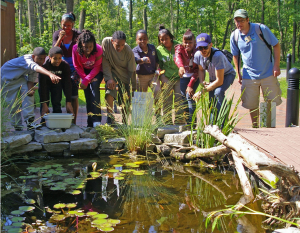
These are just a few of the species that have been recorded at Reinstein Woods Nature Preserve over time. But they are just the tip of a very large iceberg when it comes to biodiversity at Reinstein Woods. And the upcoming BioBlitz, May 13-14, will try to capture as much of that iceberg as possible!
A BioBlitz combines citizen scientists with actual scientists to locate and identify as many species as possible in a given area in a short period of time, usually 24 hours. The first BioBlitz took place in 1996 at Kenilworth Park and Aquatic Gardens in Washington, D.C. Sponsored by the National Park Service and the National Biological Service, scientists counted more than 900 species despite the park’s urban setting.
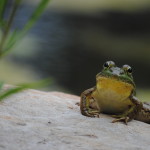 More than 600 species have historically been recorded at Reinstein Woods, but that’s counting migrating birds and some species not seen in many years. It also excludes large groups of animals, like soil-dwelling insects and many freshwater invertebrates. So the potential is there to add hundreds of organisms to the list of species residing in the 292 acres of Reinstein Woods.
More than 600 species have historically been recorded at Reinstein Woods, but that’s counting migrating birds and some species not seen in many years. It also excludes large groups of animals, like soil-dwelling insects and many freshwater invertebrates. So the potential is there to add hundreds of organisms to the list of species residing in the 292 acres of Reinstein Woods.
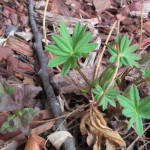 You can join the fun! We’re looking for nature enthusiasts to join Field Teams to hunt for different types of organisms at Reinstein Woods, such as birds, trees, and bats. Each team will work for about two hours, finding and identifying as many species as possible.
You can join the fun! We’re looking for nature enthusiasts to join Field Teams to hunt for different types of organisms at Reinstein Woods, such as birds, trees, and bats. Each team will work for about two hours, finding and identifying as many species as possible.
For those not interested in joining a formal team, there will be family activities from 10:00 am to 5:30 pm on Saturday. Kids and adults can explore mini-blitz stations to explore what’s living in different habitats, participate in a photo scavenger hunt, or hunt for warblers on a bird walk.
To join a Field Team, you must register, but Saturday’s family activities don’t require registration. For more information, visit the BioBlitz page or call (716) 683-5959.
National EE Week Part 3: Turtles!


Meet Clementine and Clover, Reinstein Woods’ newest permanent residents! After their owner passed away, these turtles were found under a rug in a home in Clarence. Because both of these turtles are native to New York State, it is illegal to possess them without a permit. Because they had been living in captivity for an unknown period of time, it was not safe to release them into the wild. Thus Reinstein Woods adopted them to serve as ambassadors for their species.
Clover is a female painted turtle. (To identify the sex of a turtle, look at the shape of the bottom shell—flat for females; concave for males).
Named for the yellow and red markings on their head, legs and edge of their shell, painted turtles are the most common turtle at Reinstein Woods. The lower shell of Clover has a dark central blotch, which indicates she is a subspecies called the Midland painted turtle. (The Eastern painted turtle has no mark).
On a walk through Reinstein Woods, look for “shiny black rocks” on logs laying in Lily Pond and Green Heron Pond. Those “rocks” are actually painted turtles basking in the sun. Sometimes the turtles will stack right on top of each other!

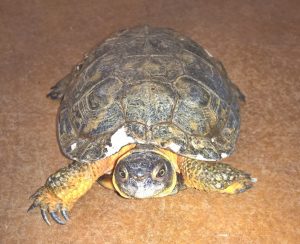
Clementine is a wood turtle. Wood turtles take their name from their preferred woodland habitat, as well as the prominent rings (annuli) on their back that remind some of wood. These colorful turtles spend most of their time wandering the woods along the edge of streams, searching for berries, mushrooms, insects, worms, and small aquatic creatures to eat.
Wood turtles are a Species of Special Concern in New York State. “Special Concern” means an animal could become threatened or endangered in the future due to several factors. In the case of wood turtles, habitat destruction is a major concern. Records from the herp atlas, an effort to identify where reptiles and amphibians live in New York State, indicate that wood turtles are uncommon in most of Western New York, but have a broader distribution downstate. To learn about efforts to help wood turtles deal with habitat disturbance downstate, check out the “Tiny Turtle Bridges” video from NPR’s Science Friday.
And be sure to stop by the Reinstein Woods’ classroom to meet Clementine and Clover on your next visit to Reinstein Woods!
National EE Week Part 2: Nature’s Engineers
A spider, a beaver and a caddisfly walk into a bar….
It sounds like the start of a bad joke, but these animals do actually have something in common: they all are incredible builders, capable of making amazing homes for themselves.

The beaver lodge at Reinstein Woods is one of the most popular stops on a trip around the Lily Pond. This pile of sticks and mud may appear random, but the beavers know how to build a house that provides them with protection from predators and the weather- even in the deepest winter, it provides both a constant temperature and adequate ventilation to sustain the life inside. 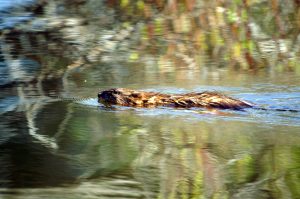
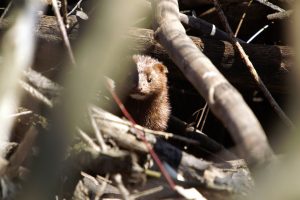
The lodge provides habitat not just for beaver, but also for other animals: snakes can often be found basking in the sun atop the lodge; Canada geese may nest on top of it, and mink are frequent visitors.
More important than their lodge home, the dams built by beavers create wetlands that sustain a variety of wildlife, making them one of only three species that can create completely new habitats capable of sustaining a variety of organisms (can you name the other two?).
You can explore the woods and learn about some of the other master builders (including spiders and caddisflies) living in Reinstein Woods at “Nature’s Engineers,” a walk and talk at 10:30 a.m. on Saturday, April 23. To register, call (716) 683-5959.
National EE Week Part 1: Scavengers!
Happy National Environmental Education Week! Reinstein Woods is excited to be part of this national effort that encourages and celebrates environmental learning across the United States. To celebrate, this week we’ll be highlighting some interesting nature sightings and activities at Reinstein Woods!
Recently a deer passed away in Reinstein Woods, we think after being hit by a car. Since in nature everyone is someone else’s lunch, we were curious who would visit the carcass. Naturalist Intern Heather Rutherford mounted a trail camera at the site of the carcass and recorded the visitors over four days in early March. The camera revealed visitors that you are likely to see on a stroll through Reinstein Woods, and also more reclusive creatures that call Reinstein Woods home.
The first visitor was a red-tailed hawk. The most common hawk in New York State, the red-tailed hawk is often seen sitting on telephone posts along roads, searching for small mammals in the grass below. This raptor will take advantage of carrion like this fresh deer. 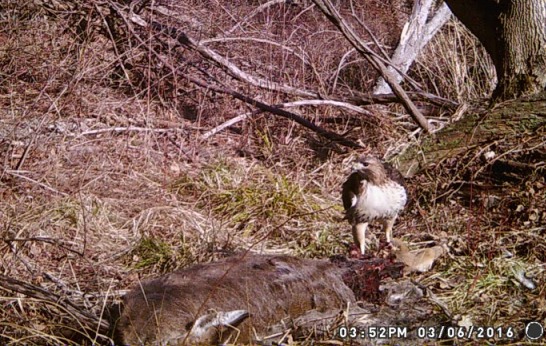
This or a different hawk visited the carcass on each of three successive days, showing off the red tail that gives it its name. 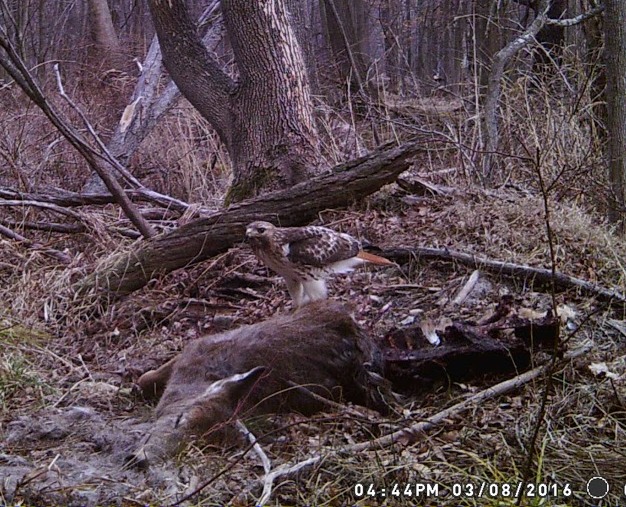
The next visitor was a white-tailed deer who may have wandered in out of curiosity, or just by chance.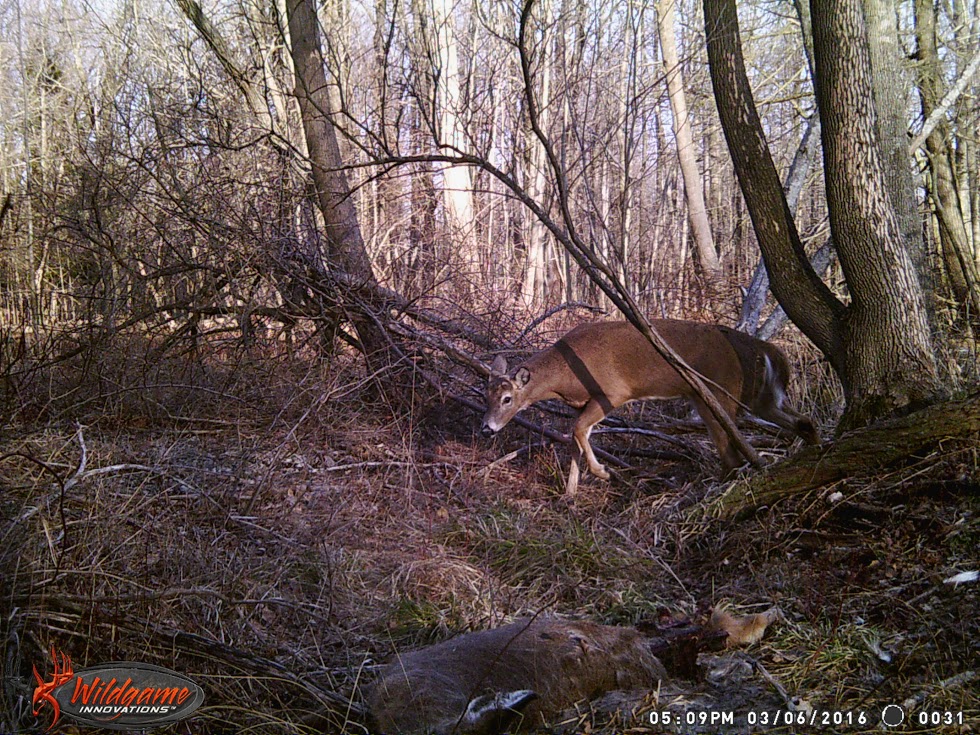 While white-tailed deer are most active at dawn and dusk, their abundant local population makes them a frequent sighting on walks through Reinstein Woods.
While white-tailed deer are most active at dawn and dusk, their abundant local population makes them a frequent sighting on walks through Reinstein Woods.
Within a couple of hours, a coyote appeared on camera. These much misunderstood animals live at Reinstein Woods but are seldom seen. They will scavenge on deer carcasses but don’t often kill adult deer, preferring instead to hunt for smaller animals like rabbits, mice, voles, and other small mammals. They will eat insects and berries at certain times of year as well. (Humans are not on their list of preferred dinner items).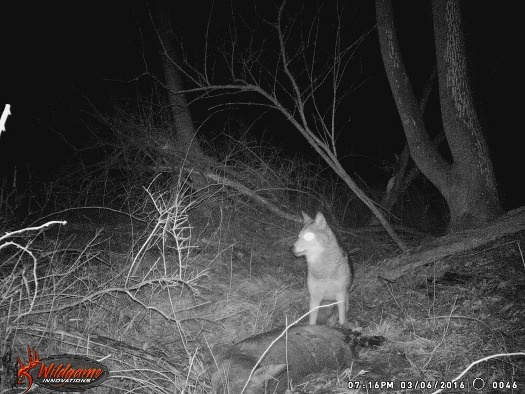
The coyote stuck around for only a few minutes on this first visit, but as soon as the coyote was finished with its snack, a red fox stepped in for a meal (note the time on the photo below).
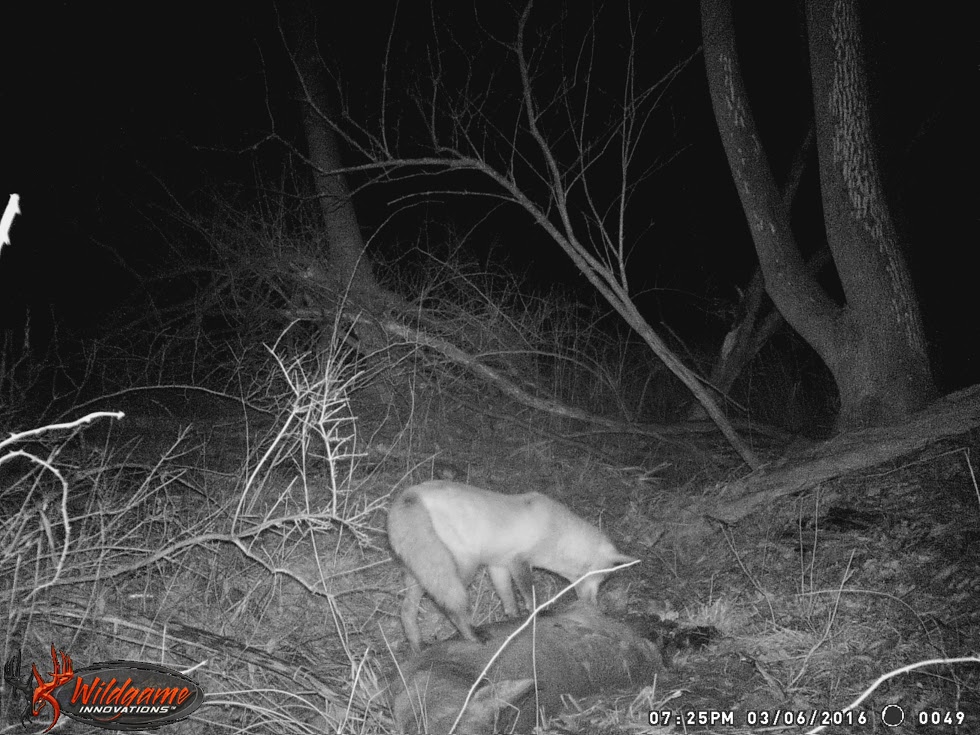
These smaller members of the canine family will also feed on a dead carcass, but their diet mainly consists of small mammals, birds, eggs and fruit. Fox enjoy the mix of habitats provided by suburban neighborhoods, so it is not unusual to encounter one at twilight at Reinstein Woods or to spot one in the surrounding neighborhood.
Over the next couple of days, the camera captured several visits by coyote and red fox. Interestingly, in the early hours of March 9, a fox was enjoying a meal…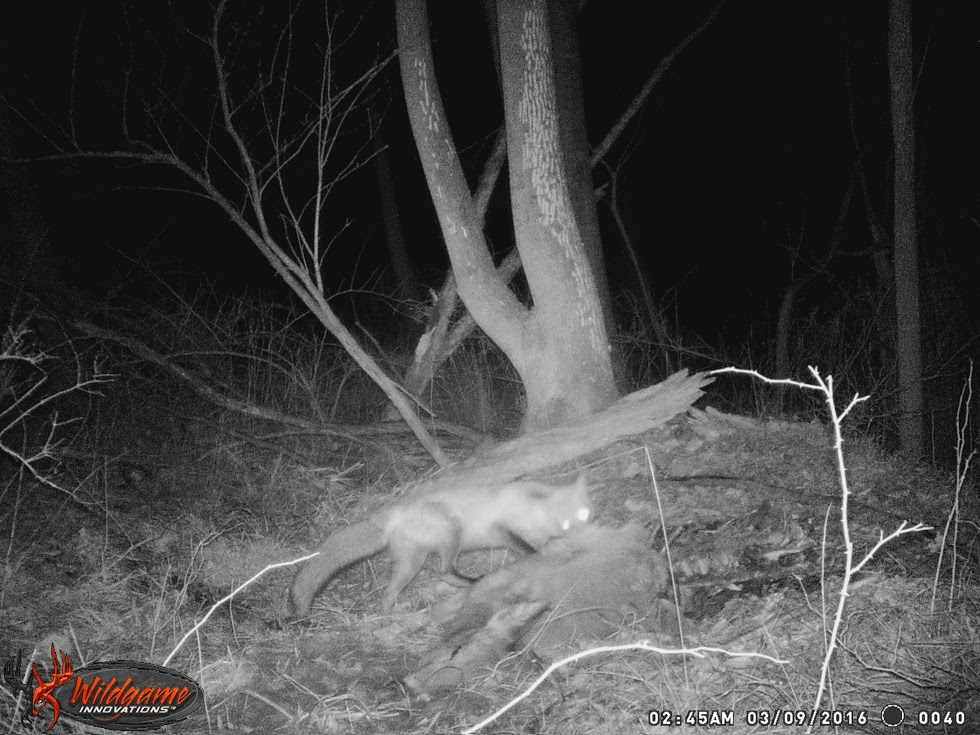
When it was interrupted by not one…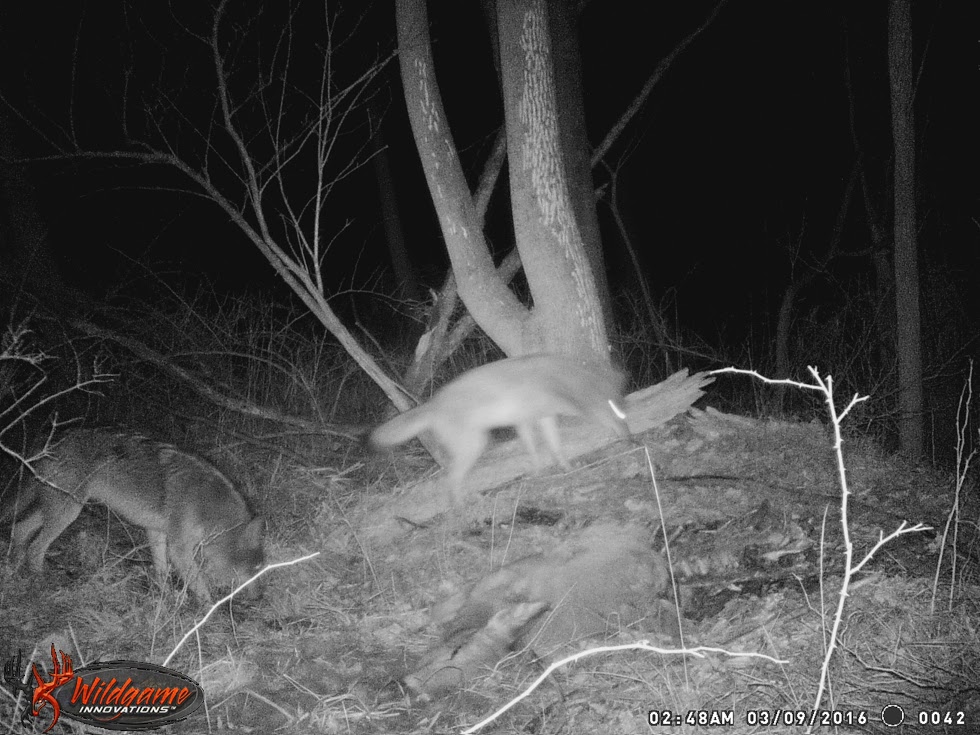
but two coyotes!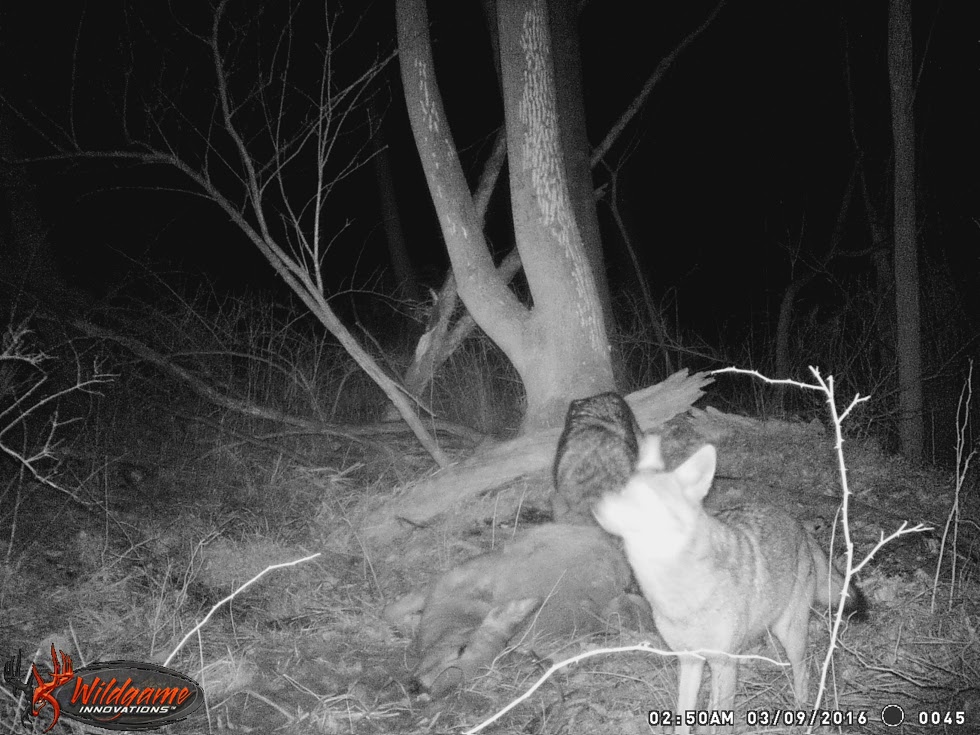
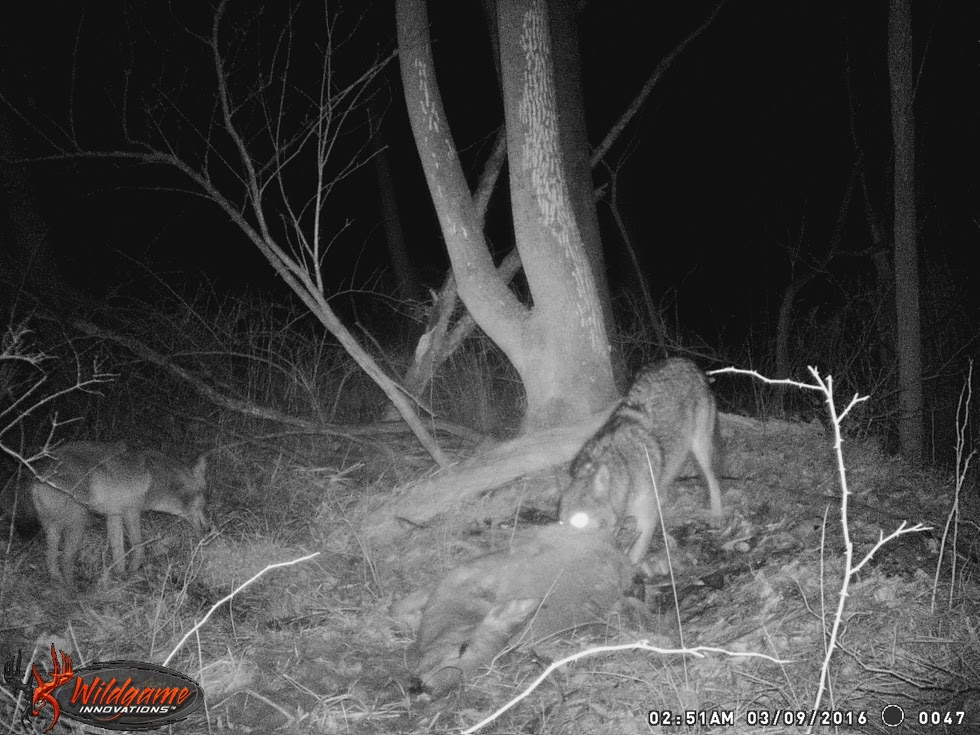
Nature Sightings
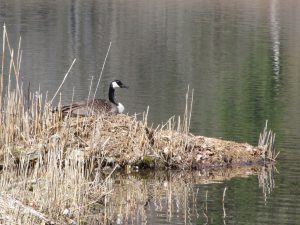
Painted turtles are basking on floating logs with the return of warm weather. Leopard frog’s snore-like call can be heard along some of the ponds. Two common loons have been on flattail lake for almost a week now. One of them continues to swim around the center of the lake. The leaves of the fragrant water lily make their way to the surface of the ponds. The tender leaves of wild leak are bursting through the  fallen leaves on the forest floor. Trout lily leaves are also beginning to appear. Garter snakes are abundant along the sunny trail edges. Listen for them rustle through the dry papery leaves. An occasional dekay’s brown snake can also be seen. Canada geese are now quietly sitting on their nest with a patrolling male close by. It would not be surprising to hear the trills of American toads in the small ponds of Reinstein Woods this weekend. I would also keep an eye out for ruby-crowned kinglets returning north.
fallen leaves on the forest floor. Trout lily leaves are also beginning to appear. Garter snakes are abundant along the sunny trail edges. Listen for them rustle through the dry papery leaves. An occasional dekay’s brown snake can also be seen. Canada geese are now quietly sitting on their nest with a patrolling male close by. It would not be surprising to hear the trills of American toads in the small ponds of Reinstein Woods this weekend. I would also keep an eye out for ruby-crowned kinglets returning north.

